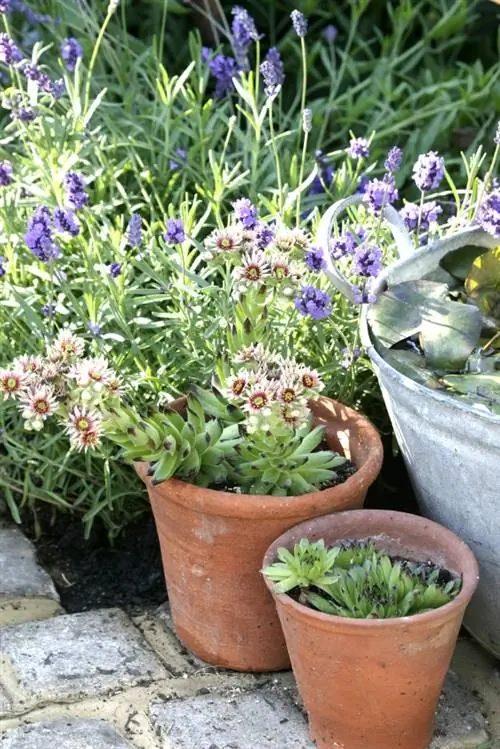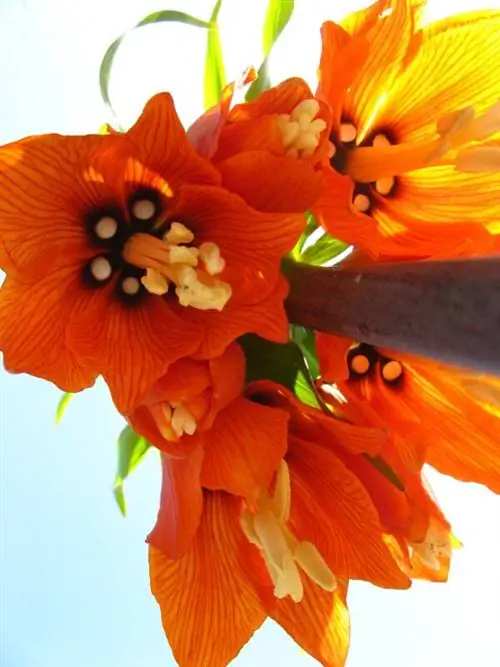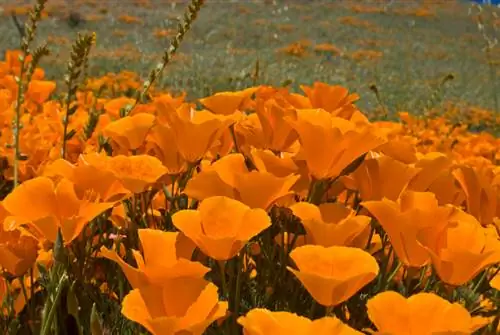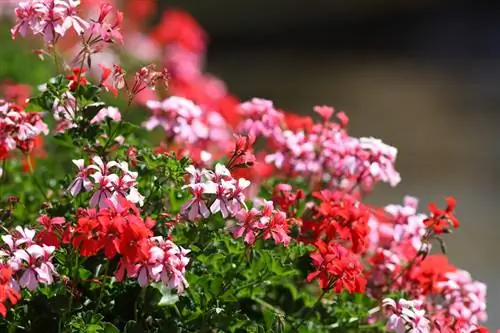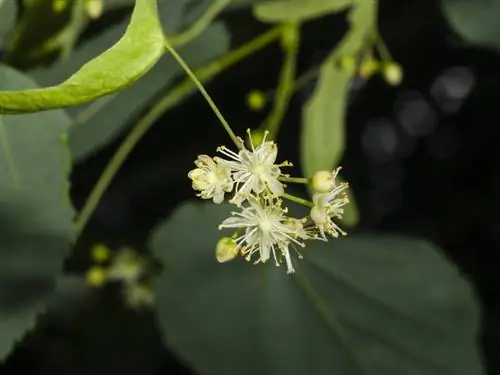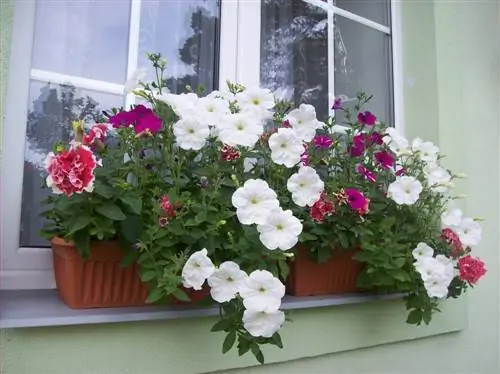- Author admin [email protected].
- Public 2023-12-16 16:46.
- Last modified 2025-01-23 11:20.
A beautifully planted balcony is a lot of fun, especially in summer. Hardly anything is more relaxing than sitting down after work among all the wonderfully flowering and fragrant plants and enjoying a glass of wine.
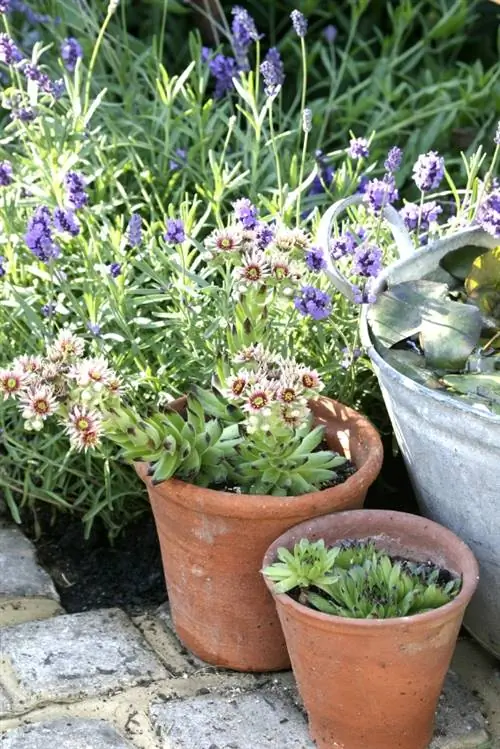
How do I care for lavender on the balcony?
To cultivate lavender on the balcony, you need a sunny location, a deep planter with drainage, permeable and sandy substrate and drainage. You can protect hardy lavender in winter with brushwood and insulating materials.
The optimal location on the balcony
Blooming lavender is reminiscent of your last vacation and relaxes the body and mind, and the intense scent also keeps annoying insects away. Instead, the flowers, which contain a lot of nectar, provide rich food for bees and butterflies. In order for the lavender to feel comfortable on your balcony, it should have sun all day long - so a south or southwest orientation is desirable. It should also be as sheltered as possible to protect the plants from strong weather influences such as wind and precipitation.
Other suitable plants for a flowering balcony
Flowering perennials such ashave similar location requirements to lavender.
- Beardflowers
- Gorse
- Summer and autumn lilacs
- Almond tree
- Crabapple and ornamental cherry
- Rosemary, sage and thyme
- St. John's Wort
- Rock Pear
- Wild roses (e.g. shrub roses)
Substrate and plant container
The roots of lavender require a lot of space, which is why the planter should be as wide and deep as possible. Low-growing lavender varieties can also be cultivated in a balcony box, although you should ensure there is adequate water drainage. Balcony boxes accumulate water, which can quickly become a fatal trap for drought-loving plants like lavender. As a result, a permeable, sandy substrate as well as drainage with expanded clay (€19.00 on Amazon), pebbles or shards of clay are essential. The substrate should also be as lean as possible. For this purpose, you can mix commercially available potting soil with plenty of sand (e.g. play sand, in a 1:1 ratio).
Propagate lavender
Lavender can be propagated quite easily via cuttings. If you don't have the space to overwinter the perennial plant appropriately, simply take cuttings and overwinter them. This saves a lot of space and usually works on the windowsill in an unheated bedroom. To do this, cut off shoots that are still green and about 10 to 15 centimeters long and place them in suitable lavender soil. Keep the substrate slightly moist but not wet. The cuttings root after an average of four to six weeks. You can also grow your own lavender plants from commercially available seeds in the spring instead of buying ready-made plants.
Winter lavender on the balcony?
Winter-hardy lavender - which in principle only includes the many varieties of real lavender - can usually be overwintered on the balcony, provided of course there is good protection. Cover the substrate with brushwood and wrap the pot with protective mats (e.g. made of coconut) or fleece to protect the sensitive roots from frost. On the other hand, lavender that is not hardy - such as lavender, which is particularly popular as a pot plant - must not be left outside in winter, but should be kept in cold house conditions over the winter. Temperatures between 10 and 12 °C are ideal.
Tips & Tricks
If possible, plant your lavender in containers made from natural materials such as clay. Plastic containers store too much water and do not allow it to evaporate, so that a climate that is unfavorable for lavender can develop.

